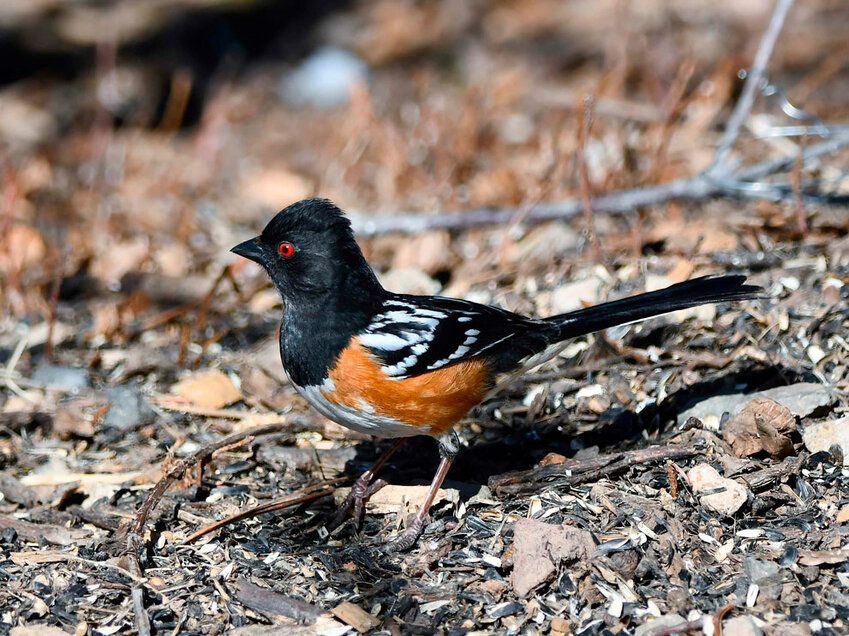
Photo courtesy Barry Knott
This week’s Bird of the Week, compliments of the Weminuche Audubon Society and Audubon Rockies, is the spotted towhee.
A group of these large, colorful members of the sparrow family is called a tangle, a reference to the thick, shrubby habitats where they are found. In all but the northern reaches of their range, which extends from southwestern Canada through the western United States and into Mexico, they are year-round residents.
The spotted towhee wears a black cape which extends over its head to its white breast. Its black back and wings are flecked with spots of white and its rufous-colored sides help to hide it in the leaf litter. Eye color was the reason for its original name, the red-eyed towhee. Females are paler versions of males.
Like some other ground feeders, including juncos, mockingbirds and meadowlarks, spotted towhees display a flash of white with their outer tail feathers. The white may serve to flush insects which react to it by jumping in self-defense but in doing so giving away their presence.
Living in the underbrush, spotted towhees are among the bird species which are often more easily heard than seen. A rustling noise in the leaves may reveal a towhee using the “double-scratch” method of hopping forward and back while raking the ground with its feet to uncover insects, seeds, berries and acorns buried in the duff and hidden from sight.
A mewing call made by these birds from deep within a bush has given them the nickname “shrub cats.” These calls can be made solely to announce presence or may indicate alarm when repeated with intensity and at frequent intervals. The related green-tailed towhee and aptly named catbird also make these catlike sounds.
As we come into breeding season, you may spot a male singing a rapid trill from an exposed perch in hopes of attracting a mate. What his simple song lacks in melody is made up for by his dedication, and he is often heard repeating the song from morning to night.
For information on events, visit www.weminucheaudubon.org and www.facebook.com/weminucheaudubon/.